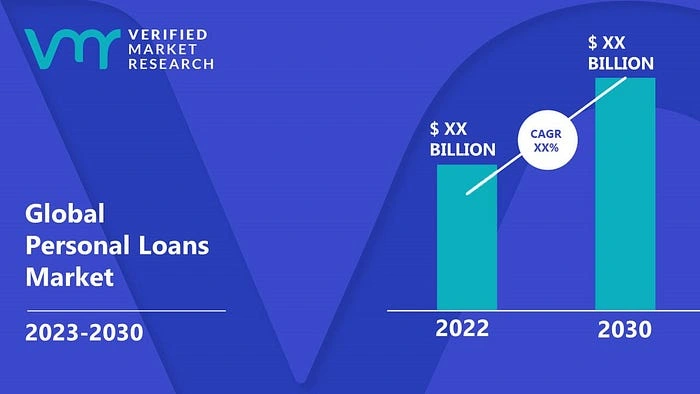An In-Depth Exploration of the Loan Market

The loan market is highly dynamic by nature. To ensure that you’re always making smart financial decisions, it’s crucial to stay aware of the current trends. Thorough knowledge of the loan market is vital for a number of reasons. First, it can help guide you toward taking out the right loans for your needs. As a borrower, it’s important to confirm that you meet the requirements to apply for a personal loan, a mortgage or another loan. Preparing ahead of time is essential to boosting your chances of getting approved.
The current loan landscape also has a direct impact on your personal credit. Your credit score is one of the most heavily weighed factors in a lender’s decision to approve or deny your application. Familiarizing yourself with the market trends in 2023 can help enrich your understanding of where you stand in terms of personal credit. Once you have a deeper knowledge of recent market behavior, you’ll be better equipped to take steps to improve your credit score and get approved for a loan.
Navigating the Loan Landscape in 2023: A Look at the Current Market Situation
According to recent market research, the global personal loan market is expected to see significant growth over the next five years. Market analysts predict that the current market size will expand at a compound annual growth rate (CAGR) of 32.2% between 2023 and 2028. This upward trend is influenced by a number of factors that can help shed light on the behavior of the loan market.
Digitization of Banking Sector
A key predictor of the success of the loan market is how readily accessible loans are to borrowers. Because the banking sector has become increasingly digitized in recent years, simple and rapid credit availability is now more attainable than ever before. This change also reflects consumers’ growing preference for quick and accessible credit. Due to the increasing convenience and flexibility of online loan applications, individuals are applying for personal loans at a much higher rate. This trend has directly contributed to the rising prevalence of personal loans.
Rising Demand for Financial Services
Thanks to the rapid expansion of the financial services sector, the loan market has opened its doors to greater competition and innovation. Cutting-edge firms, such as FinTech companies, have driven the demand for digital banking and online loan applications. These innovators are constantly seeking new ways to streamline the loan application process and boost customer satisfaction. As a result, more customers have a positive view of the loan market, which directly feeds its growth.
Increase in Personal Loan Applications
One of the biggest contributors to the expansion of the personal loan market is the number of loan applications. Overall, the number of loan applications has been steadily rising, helping to foster the growth of the personal loan market. There are numerous reasons why a growing number of individuals are opting to take out personal loans. Some of the most commonly cited reasons include the following:
Debt consolidation
Home remodeling
Unplanned medical expenses
Moving costs
Vehicle financing
Wedding expenses
Vacation costs
Thanks to the digitization of banking services and the increasing flexibility of personal loans, more and more consumers feel confident about obtaining these loans for various reasons.
An Overview of the Types of Loans
Before you apply for a loan, it’s a good idea to familiarize yourself with the different types of loans that are available to you. Each of these loans serves a unique purpose and comes with a distinct set of responsibilities. Once you have a deeper understanding of each type of loan, you will be better prepared to make the most appropriate decision for your needs.
Here is an overview of the six most common types of loans and what they entail.
Personal Loans
Personal loans are some of the most versatile loans available to borrowers. Generally speaking, they can be used for almost any purpose. Some of the most common uses for personal loans include home remodeling, moving costs, debt consolidation, vehicle financing and unplanned medical expenses.
Personal loans often have fixed or variable interest rates. They also have relatively flexible repayment terms, which can range anywhere from a few months to several years. Because personal loans do not require collateral, they are considered unsecured loans. These types of loans are ideal for borrowing smaller amounts of money, and they also tend to have a faster application process.
Auto Loans
If you need some financial assistance when purchasing a new vehicle, an auto loan may be the right choice for you. Auto loans allow you to borrow the price of the vehicle minus any down payment. The repayment terms of an auto loan tend to be longer than that of a personal loan, with the average loan terms ranging from 36 to 72 months.
Unlike personal loans, which are considered unsecured loans, auto loans are secured and require collateral. The terms and conditions of auto loans state that the vehicle is collateral, meaning it will be returned to the lender if the borrower stops making payments. It’s important to keep this distinction in mind if you’re considering taking out an auto loan.
Mortgage Loans
Many first-time homebuyers take out a mortgage loan to help them pay for their new house. A mortgage loan lets you borrow the price of the house minus any down payment. Because these loans typically cover a large sum of money, they tend to have some of the longest repayment terms. Generally speaking, the repayment terms of the average mortgage loan are 10, 15, 20 or 30 years.
Interest rates for mortgage loans can be either fixed or adjustable. As the name implies, fixed rates don’t change at all over the course of the loan’s lifetime. Adjustable rates, on the other hand, can be modified by the lender on a yearly basis. Borrowers also have the option of applying for a conventional loan, which is not backed by a government agency, or a government-backed loan.
Student Loans
Higher education often comes with a steep price to pay. Fortunately, student loans are designed to help students and their families afford an undergraduate or graduate education. The two main types of student loans are federal loans and private loans. Federal loans are funded by the U.S. Department of Education and offered in the form of financial aid. Some of the most desirable features of a federal loan are income-based repayment, forgiveness, deferment and forbearance.
Because private student loans are not backed by the government, each lender is free to set their own terms, fees and interest rates. Private loans also don’t come with many of the benefits that federal loans offer, such as forbearance and income-based repayment. In addition, it’s worth noting that private student loans typically require a credit check, unlike government-backed loans.
Credit-Builder Loans
If you’re struggling to improve your credit score, you might want to consider applying for a credit-builder loan. This type of loan is designed to help individuals with bad credit raise their FICO score. The sum of money covered by the loan typically ranges from $300 to $1,000. Once the lender deposits this amount into a savings account, it’s the borrower’s responsibility to make fixed monthly payments over a designated time period, which is usually 6 to 24 months.
If you successfully submit all of your monthly payments, the money is repaid to you in full. In some cases, the lender may repay you the money in addition to any interest you’ve made. As long as you make your payments on time, taking out a credit-builder loan can help improve your payment history, which subsequently boosts your credit score.
Debt Consolidation Loans
A debt consolidation loan is a type of personal loan intended for a specific purpose. Debt consolidation loans are designed to help borrowers pay off debt with high interest, such as credit card debt. Many borrowers opt to consolidate their debt out of convenience. With a debt consolidation loan, you only have to worry about repaying one lender instead of several lenders. Additionally, if the interest rate of the loan is lower than that of your current debt, you can end up saving money in the long run.
Another major advantage of debt consolidation loans is that they can help improve your credit score. When you pay off outstanding credit card debt with the aid of a loan, it brings down your credit utilization ratio (CUR). A lower CUR is directly proportional to a lower credit score. It’s also worth noting that debt consolidation loans have a wide range of repayment terms and can have either fixed or adjustable interest rates.
Interest Rates for Different Loans
When applying for a loan, it’s crucial to be aware of the different interest rates associated with each type of loan. There are several factors that help determine interest rates, even among loans of the same type. Some of the key factors that influence loan rates include the following:
Term of the loan
Credit score of the borrower
Type of loan (secured or unsecured)
Lender issuing the loan
Debt-to-income ratio of the borrower
As a rule of thumb, unsecured or short-term loans tend to have higher interest rates than secured or long-term loans. Keeping this in mind can help prepare you for choosing the optimal loan for your specific needs. It’s also a good idea to familiarize yourself with the average rates for common types of loans. For example, the average 30-year fixed-rate mortgage loan was 3.3% in September 2021. Because mortgage loans are secured or long-term loans, they have some of the lowest rates in the industry.
As discussed earlier, personal loans are considered short-term or unsecured loans. This means that their interest rates can be some of the highest in the industry. According to the Federal Reserve, the average rate on a two-year personal loan was 9.58% as of May 2021. Private student loans also boast very high interest rates, with the upper end at 12.99%. Meanwhile, federal student loans have a more modest average interest rate range of 3.73% to 6.28%.
Credit Score Impact on Different Loans
Before applying for a loan, it’s important to understand how your credit score can impact various types of loans. Your credit score is one of the most crucial factors that lenders consider when reviewing your application for a loan. By providing a summary of your payment history, it communicates whether you’re a responsible and reliable borrower. This metric helps lenders determine whether it’s worth taking you on as a potential risk.
Your credit score also helps decide the interest rate that a lender issues you. This is especially true when applying for a personal loan. Generally speaking, the better your credit score is, the higher your likelihood of securing a lower interest rate. Your FICO score is divided into five elements: payment history (35%), amounts owed (30%), length of credit history (15%), credit mix (10%) and new credit (10%). Because each element is weighed differently due to importance, it’s important to ensure that you have your priorities in order when attempting to improve your credit score.
Choosing the Best Loan in 2023
Now that you have a more in-depth understanding of the current loan landscape and the various loans available to you, you’re better prepared to choose the best loan for your unique needs. While you do research on your preferred loan type, it’s well worth your time to take steps to boost your credit score. Be sure to maintain low balances, make payments on time and use credit monitoring to track your progress. These strategies can help ensure that you’re fully equipped to apply for the loan you need.
Like this project
Posted Sep 5, 2023
The loan market is highly dynamic by nature. To ensure that you’re always making smart financial decisions, it’s crucial to stay aware of the current trends.
Likes
0
Views
17







